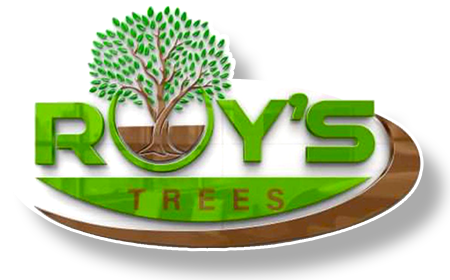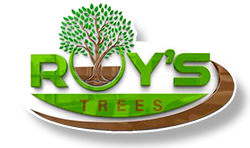Roy’s Trees Blog

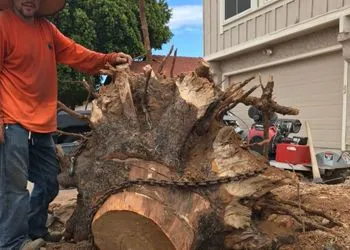
When preparing a home for sale, homeowners often focus on interior upgrades, fresh paint, and other updates to the house itself. However, overlooked outdoor issues such as tree stumps can negatively impact how buyers perceive a property. Removing tree stumps before listing your home can improve appearance and marketability. At Roy’s Trees, we provide expert stump grinding and removal in the greater Phoenix area. Here’s a look at four reasons to remove tree stumps before putting your home up for sale. Improves Curb Appeal and First Impressions Curb appeal plays a major role in attracting potential buyers, and tree stumps can be an immediate eyesore. They make a yard look poorly maintained, even if the rest of the landscaping is well cared for. Removing stumps creates a clean, open appearance that allows buyers to better envision themselves enjoying the outdoor space. A polished exterior can make a strong first impression and encourage buyers to take a closer look. Eliminates Safety Hazards Tree stumps can pose a tripping hazard for visitors. During showings or open houses, uneven ground caused by stumps can increase the risk of trip-and-fall accidents. From a seller’s perspective, this creates unnecessary liability concerns. Removing stumps helps ensure a safer property and reduces the chance of injuries that could complicate the home-selling process. Prevents Insect Problems Decaying tree stumps can attract a variety of pests, including termites, ants, and beetles. These pests may eventually migrate from the stump to nearby structures, raising red flags for potential buyers. Evidence of pest activity can lead to concerns about hidden damage and future maintenance costs. Removing stumps eliminates a potential nesting site and helps reassure buyers that the property is well maintained. Makes Landscaping More Functional Tree stumps limit how a yard can be used and maintained. They can interfere with mowing, gardening, and future landscaping plans. Buyers often look for outdoor spaces that are flexible and easy to maintain. By removing stumps, you create a more usable yard that buyers can adapt to their needs, whether that means installing a patio, planting grass, or adding garden features. Stump Grinding & Removal in Phoenix, AZ For stump grinding and removal in Phoenix and the surrounding area, contact Roy’s Trees at 602-881-2775 . Feel free to give us a call to ask for an arborist estimate in greater Phoenix, AZ!
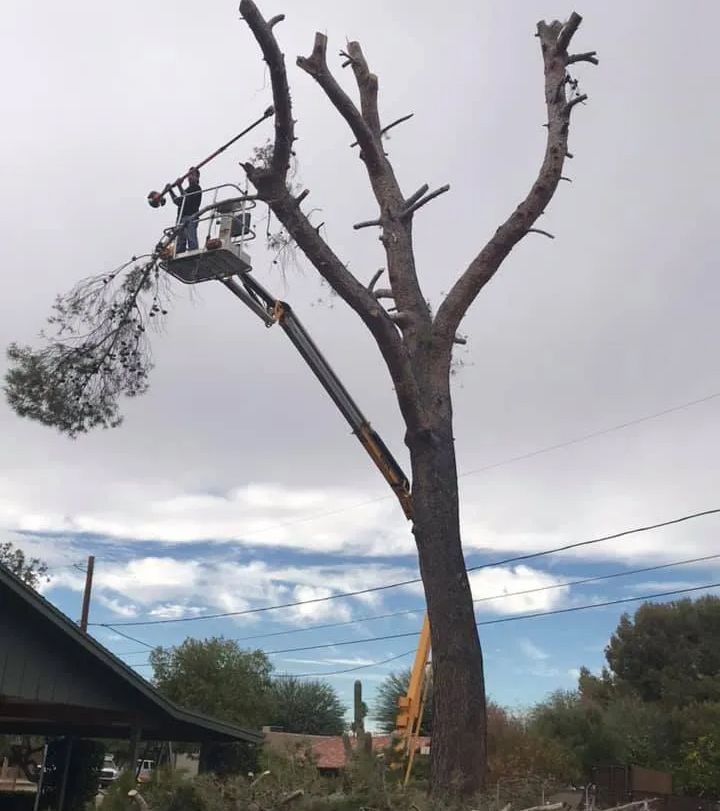
Big trees can become extremely dangerous when weakened or unstable—especially during high winds. A falling tree or large limb can cause severe damage to your home, vehicles, and nearby power lines, not to mention the safety risk to people below. The good news is that trees often give warning signs before they fail. Knowing what to look for can help you take action early and prevent a potentially serious accident. At Roy’s Trees, we provide expert hazardous tree removal in the greater Phoenix area. Here are four signs that a tree may be at higher risk of toppling in strong winds. Significant Tilting A tree that’s leaning noticeably to one side is one of the clearest indications of instability. While some trees naturally grow at an angle, a lean that has recently developed or increased in severity could signal root damage or soil movement. High winds put tremendous pressure on leaning trees, increasing the likelihood of them falling. If you notice a new lean—especially if the ground near the base appears cracked or lifted—contact a professional right away for an assessment. Split Trunks and Branches Cracks, cavities, and splits in a tree’s trunk or major limbs often mean the tree’s structural integrity has been compromised. These weaknesses can cause the tree to break apart during a storm. Even if the damage looks minor from the outside, the internal wood may be decaying or hollow, making the tree far less stable than it appears. Professional evaluation is essential to determine whether the tree can be safely pruned or if removal is necessary. Exposed or Damaged Roots A tree’s roots are its anchor. When they’re damaged, decayed, or exposed, the entire tree becomes more susceptible to falling in windy conditions. Construction work, erosion, and compacted soil can all harm roots or reduce their ability to support the tree. Warning signs include visible roots lifting from the ground, soil disturbance around the base, or fungal growth near the root zone. Because root issues often develop unseen, any visible damage should be taken seriously. Dead or Dying Branches Dead or brittle branches are much more likely to snap in high winds, including large limbs overhanging structures or driveways. When parts of a tree are no longer receiving nutrients, it’s a sign of poor overall health and stress. A canopy full of deadwood often indicates deeper issues that could lead to full tree failure during a storm. Tree Removal in Phoenix, AZ For tree removal in Phoenix and the surrounding area, contact Roy’s Trees at 602-881-2775 . Feel free to give us a call to arrange an arborist estimate in greater Phoenix, AZ!
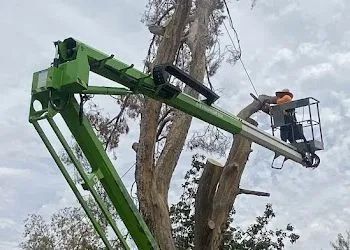
Removing a tree might seem like a manageable weekend project, but in reality, it’s one of the most dangerous and technically demanding outdoor tasks a homeowner can take on. On the other hand, experienced arborist crews know how to remove trees safely, efficiently, and in compliance with local regulations. At Roy’s Trees, we provide expert tree removal in the greater Phoenix area. Here are four reasons to schedule professional tree removal instead of attempting it yourself. Safety Should Always Come First Tree removal can be extremely hazardous, especially when dealing with large or decaying trees. Falling branches, unstable trunks, and the use of chainsaws at height all present serious risks to anyone without the proper training. Professionals follow strict safety procedures, use the right gear, and understand how to control the direction of a tree’s fall. Their expertise helps prevent injuries and keeps your property safe during the process. Proper Equipment and Techniques Are Essential Removing a tree safely commonly requires more than just a chainsaw. Professionals often use heavy machinery, rigging systems, ropes, and protective gear to ensure precise and controlled removal. They also know how to assess the tree’s structure and determine the best cutting points to avoid unpredictable collapses. Without this knowledge and equipment, DIY removal can lead to dangerous situations and costly damage to nearby homes, fences, or power lines. Professionals Protect Your Property One wrong move during a DIY tree removal can cause thousands of dollars in damage. Trees often grow close to buildings or other valuable structures. Professionals have the experience to navigate these tight spaces safely, ensuring that limbs and debris are lowered carefully rather than falling freely. Efficient Cleanup and Disposal Once the tree is removed, there’s still the matter of dealing with the debris. A professional tree removal service includes complete cleanup, stump grinding if needed, and proper disposal of branches, logs, and wood chips. Handling this on your own can take days and require multiple trips to a disposal site. With professional help, your yard is left clean and ready for future landscaping. Tree Removal in Phoenix, AZ For tree removal in Phoenix and the surrounding area, contact Roy’s Trees at 602-881-2775 . Feel free to give us a call to arrange an arborist estimate in greater Phoenix, AZ!
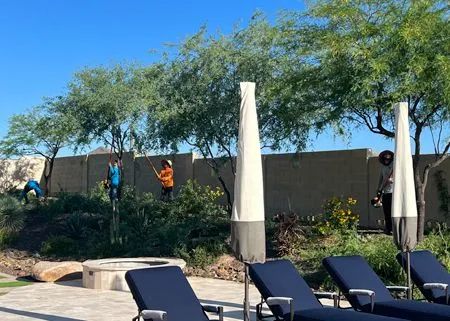
Pruning may seem like a simple task, but when done correctly, it’s one of the most important forms of care you can provide for your trees. While some homeowners may try to prune on their own, professional pruning offers far greater benefits because it’s done with precision, safety, and the long-term health of the tree in mind. At Roy’s Trees, we provide expert tree pruning in the greater Phoenix area. Here are four ways that professional pruning benefits your trees and property. Promotes Healthy Growth Pruning removes dead, damaged, or weak branches that can drain a tree’s energy. By cutting away these problem areas, the tree can redirect its resources toward producing stronger branches, lush foliage, and healthy growth. Professionals know how much to remove matter without excessively stressing the tree, which helps ensure it continues to develop properly. Prevents the Spread of Disease One of the biggest threats to trees is disease, which often enters through unhealthy branches. Professional pruning eliminates these compromised limbs before the problem spreads to the rest of the tree or nearby trees. A professional can identify subtle signs of disease that most people would overlook, helping protect not just one tree—but your overall landscape. Improves Safety Overgrown or weakened branches can pose hazards to people, property, and nearby structures. Storms can easily send branches crashing down, causing injuries or damage. Professional pruning reduces these risks by removing dangerous limbs and ensuring the tree’s structure is sound. This makes your yard safer while also preserving the tree’s natural shape. Enhances Appearance and Structure Pruning isn’t only about health and safety—it also improves the overall look of your trees. Professionals carefully shape trees to create a balanced, attractive appearance that enhances your landscape. At the same time, proper pruning strengthens the tree’s structure, preventing uneven weight distribution that could lead to breakage in the future. Professional Tree Pruning in Phoenix, AZ For tree care in Phoenix and the surrounding area, contact Roy’s Trees at 602-881-2775 . Feel free to give us a call to request an arborist estimate in greater Phoenix!
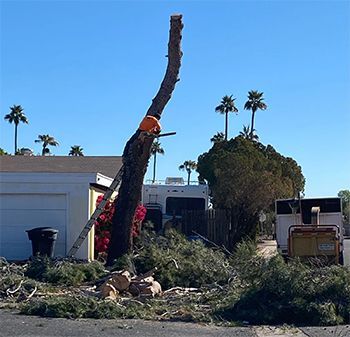
Dead trees may seem harmless at first glance, but they can quickly become a serious hazard to your property and safety. Whether the tree is in your front yard, backyard, or near a structure, its weakened condition makes it unpredictable. Professional removal ensures the job is done safely, efficiently, and with the proper equipment. At Roy’s Trees, our local arborists can identify and safely remove dead trees. Here are five reasons why it’s important to take swift action when dealing with a dead tree. They Pose a Serious Safety Hazard Dead trees are structurally unstable, making them prone to falling without warning. Even a light windstorm or heavy rain can cause large limbs or the entire trunk to collapse. This can put your family and neighbors at risk. Professionals have the tools and expertise to safely remove these hazards before they cause harm. They Can Damage Property If a dead tree is near your home, garage, fence, or driveway, it could cause significant damage if it falls. Heavy limbs can crush roofs, vehicles, and outdoor structures, leading to costly repairs. Removing a dead tree before it topples can save you thousands of dollars and prevent major disruptions to your daily life. They Attract Pests Dead wood is a magnet for insects like termites, carpenter ants, and beetles. These pests often spread from the tree to other parts of your yard, and in some cases, your home. Once they’ve settled in, pest control can be expensive and time-consuming. By having a professional remove the dead tree quickly, you eliminate a potential breeding ground for infestations. They May Spread Disease to Other Trees Many trees die as a result of fungal infections or other plant diseases. If the dead tree remains in your yard, it can spread these problems to healthy trees nearby. Professional removal includes proper disposal of diseased wood, which helps protect the overall health of your landscape. They Reduce Your Property’s Appeal A dead tree can make even a well-kept yard look neglected. It’s an eyesore that can bring down curb appeal and, if you’re selling your home, make a poor impression on potential buyers. Having it professionally removed restores the beauty of your property and allows you to replant with a healthier, more attractive tree. Tree Removal in Phoenix, AZ For expert tree removal in Phoenix and the surrounding area, contact Roy’s Trees at 602-881-2775 . Feel free to give us a call to arrange a tree services estimate in greater Phoenix!
